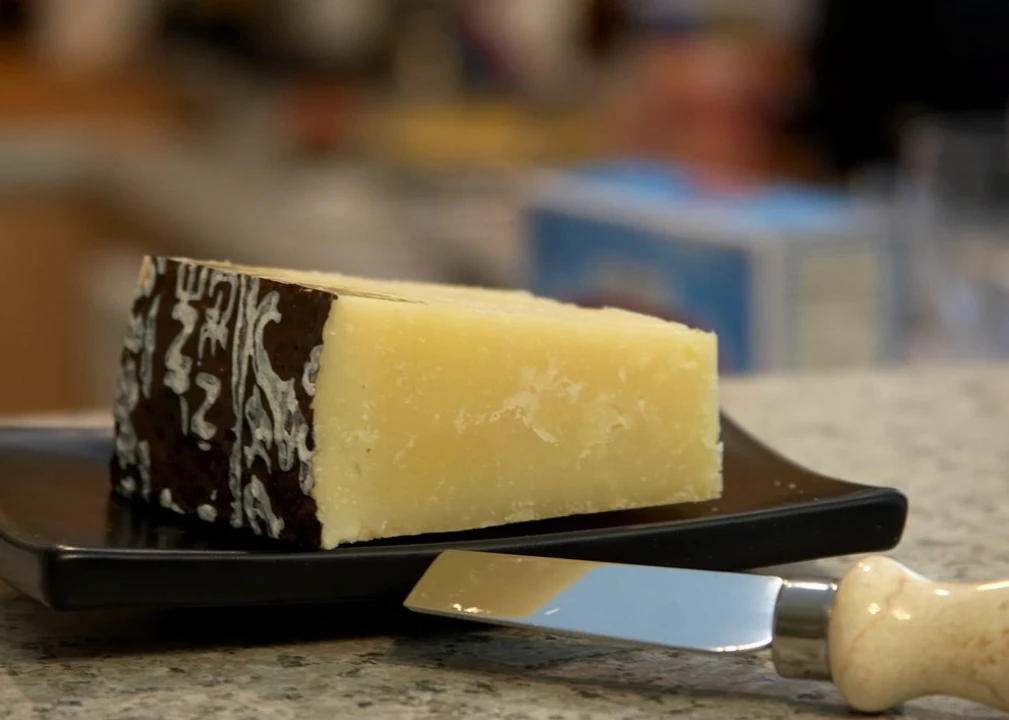DOP (PDO) Pecorino Romano is the direct descendant of the sheep's milk cheese that was the staple food of the Roman Empire. The story goes that, over 2000 years ago in ancient Rome, the same sheep's milk cheese that we eat today was an important part of the daily meals and banquets of imperial palaces.
In 48 BC, Virgil describes its nutritional and energy value and says that the daily ration for each Roman soldier was 27 grams. This supplemented their basic meal, emmer soup, providing the right amount of energy to face battles and constant travel. In addition to Virgil, personages such as Columella, Varro, Hippocrates and Pliny the Elder not only provide detailed descriptions of its use but also the cheese making techniques, which were not substantially different from those used today.
With the passage of centuries, Pecorino cheese was part of the diet of pilgrims because easy to eat and an excellent substitute for meat in periods of abstinence.
Thanks to its nutritional properties and ease of conservation, Roman Pecorino cheese soon became a popular product and, from Lazio its transformation technique spread to Tuscany and Sardinia, where a large part of its production is concentrated today.
The Product
DOP (PDO) Pecorino Romano is a hard, cooked cheese made from fresh sheep's milk coming exclusively from farms in the production area and coagulated with lamb rennet derived exclusively from animals reared in the same area.
It has a thin, light ivory or natural straw colored crust, sometimes covered with special neutral or black alimentary protective coatings.
The texture of the cheese is compact or with small eyes and its color can vary from white to a more or less intense straw yellow, depending on the technical conditions of its production.
The flavor of the table cheese is aromatic, slightly spicy and tangy while the grated cheese is intensely spicy.
The forms are cylindrical, weighing between 20 and 35 kilograms, with the mark of origin all around the side (a diamond with rounded corners containing a stylized sheep's head) and the words "Pecorino Romano”.
DOP (PDO) Pecorino Romano aged a minimum of five months can be sold as a table cheese, while cheese for grating must be aged 8 months.
The DOP Pecorino Romano Cheese Protection Consortium, established in 1979 by a group of Lazio and Sardinian producers, monitors its production and sale and organizes initiatives to promote and provide information about the product in all markets.
The Cut
The flavors and aromas of the cheese change from the crust to the core. This is due to the different densification of the paste during aging, and the migration paths and times of the moisture. Experiencing all the flavour variations of a cheese requires cutting it in portions that capture all the nuances.
For DOP (PDO) Pecorino Romano there are two types of cut: to exalt its granularity, use a drop-shaped knife and break rather than cut the cheese.
The forms are first split open and chipped to obtain flakes. If you want to cut it into wedges, after opening the form with a cheese wire, cut slices with a cheese knife with a thick blade about 30 cm long.
The Area
DOP (PDO) Pecorino Romano DOP is produced in Sardinia, Lazio and the Province of Grosseto (Tuscany), areas where the relationship with nature is an absolute value and the environment is respected and protected.
In the regions where the milk destined to become DOP Pecorino Romano cheese is produced, the preferred breed is the Sardinian sheep, an ancient native breed, and Sardinian ranching accounts for 50% of Italy's sheep.
Most of Sardinia consists of hills and mountains with an altitude of less than 1800 meters. The island is the realm of natural pastures with more than 60% of its land available for grazing.
It has a temperate to warm Mediterranean climate and the vegetation is primarily annual species, grasses and legumes and the characteristics trees and shrubs of the Mediterranean maquis (oak, lentisk, myrtle, rosemary and heather). The most common forage crops are: alfalfa, clover and corn.
By Consorzio per la Tutela del Formaggio Pecorino Romano




